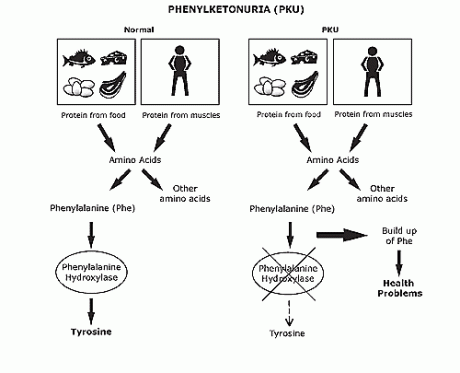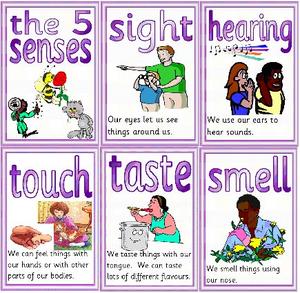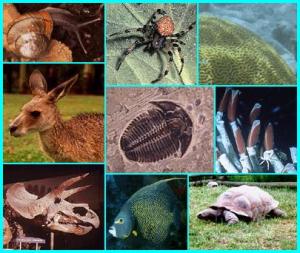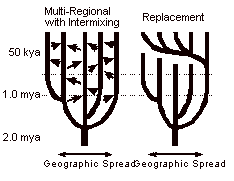Learning Logs
Fourth Quarter
Click to view copy of my Learning Logs for the fourth quarter

People with Dwarfism
Applying all that we have learned in Life Science was the focus of the fourth quarter. We had an exhibit during the YMSAT week where we showed our posters on genetic diseases and storybooks. We also had an exercise about bioinformatics.
Genetic Diseases
Aside from the often unbearable common symptoms of colds, coughs, and fevers, there are people who experience more unpleasant symptoms of their disease. Genetic diseases are caused by mutations in the genes. These include Fragile X Syndrome, Progeria, Hemophilia, Dwarfism, Krabbe Disease, and many more. There are disorders which are inherited. Some do not allow infected people to live until adulthood.
Bioinformatics
The National Center for Biotechnology included databases and data in the life sciences. Through this site, we were able to know more about phenylketonuria. We learned more about phenylalanine hydroxylase, the defective enzyme in phenylketonuria.

Phenylketonuria
Ensembl had data on genomes. We were able to learn more about Artemin, a gene that encodes for human growth factor.
Sources of Images:
- People with Dwarfism-http://telepicturesblog.warnerbros.com/tyrashow/2127-blog.gif
- Phenylketonuria-http://www.newbornscreening.info/Parents/aminoaciddisorders/Images/phenylketonuria.gif
Third Quarter
Click to view copy of my Learning Logs for the third quarter
In the third quarter, the class spent a lot of time in front of the television. we watched documentaries on the human senses. We even had a glimpse of facts about the human face. There are people with Mobius syndrome which does not allow them to make facial expressions. There are those with the Asperger’s disease who can not recognize people’s emotions.
We also learned about animal behavior. The class was separated into groups. Each group had to present on their topic about animal behavior. Our group presented on the adaptive value of behavior and the theory of natural selection to explain the possible persistence of certain behaviors. An animal’s behavior depends on how it can maximize benefits more than costs.
 Human Senses
Human Senses
Touch, taste, smell, hearing, and sight comprise the five human senses. We use these to interact with our surroundings.
Our sense of taste tells us what not to swallow. We usually reject those that will make us feel unpleasant and crave for what we need. Smell can influence the taste of things. It can also trigger specific memory.
What we hear can influence our feelings and emotions. Music has been called as the universal language because it crosses the barriers between the written and spoken languages. Hearing, along with vision, is also important for balance.
Touch receptors are concentrated in places where an organism most interact with the world. The intensity of pain that one can feel can depend on the level of expectation.
There are more things that are happening in front of someone, compared to what he focuses on. People usually miss on a lot of details.
Animal Behavior
Animals exhibit different behaviors. Aside from the physical characteristics, behaviors differentiate kingdoms, phyla, and up to the species level. There are even subspecies of organisms.
Genetics have an influence on animal behavior. Behaviors can either be learned or instinctive. Learned behaviors are acquired through training while instinctive ones are usually done right at the first time.
Animals have communication signals and displays to interact with the environment. They develop secondary characteristics depending on their sex.
Cooperation can also be seen among animals. There are even those that exhibit altruistic behaviors. In altruism, the survival of the helper is decreased while increasing the fitness of another organism.
Sources of Images:
- Five Senses-http://webpages.shepherd.edu/JHENCK01/st_senses.jpg
- Animals-http://www.ucmp.berkeley.edu/phyla/animcoll.jpg
Second Quarter
Click to view copy of my Learning Logs for the second quarter
In the Life Science class, we watched WALL-E and a video about Mitochondrial Eve and the Out of Africa theory. We also had writing workshops for storybook making.
The multiregional model and the African emergence model give explanations on how humans emerged on different locations on the earth. Which should we believe?
Multiregional Model
The multiregional model says that Homo erectus spread throughout the world and developed into the same species, Homo sapiens.
Homo erectus dispersed throught the world but level of gene flow between geographically separated populations prevented speciation . Separate populations of Homo erectus evolved in regionally distinct ways because of natural selection reuslting to regional variants seen today. The emergence of Homo sapiens was not restricted to one area.
African Emergence Model

Path of Homo sapiens migrating from Africa
The African emergence model or the Out of Africa Theory says that after Homo erectus migrated out of Africa, the population in Africa became reproductively isolated, thus evolving independently into a separate species of Homo sapiens. Homo sapiens migrated into other regions and replaced the populations of Homo erectus. Interbreeding caused human variation.
No one is still a hundred percent certain on how Homo sapiens really came to be, but the multiregional model and the African emergence model both give views on the origins of man. These should be used to further analyze the evolution of mankind.
Reference:
Johanson, D. (2008). Origins of modern humans: Multiregional or out of Africa Retrieved October 16, 2008 from http://www.actionbioscience.org/evolution/johanson.html.
Sources of Images:
- Path of Homo sapiens migrating from Africa-http://pubpages.unh.edu/~jel/images/out_of_Africa.jpg
- Proposed family trees of Multiregional model (left) and African Emergence Theory (right)-http://www.asa3.org/asa/education/origins/bloom_files/image006.gif
First Quarter
Click to view copy of my Learning Logs for the first quarter
There have been different activities about evolution during the classes in Life Science. There were reading materials. There were also film viewings and group activities.
Darwin
In the film “Galapagos: Beyond Darwin”, I learned more about Charles Darwin’s exploration of the Galapagos Island.
Natural selection, part of Darwin’s theory of evolution says that nature dictates the characteristics that organisms need to survive. I have seen the variety of species in the Galapagos. There are turtles which are slow-paced because they have no competition for food. There are also finches who have developed different beaks.
In the article “Evolution of a Scientist” by Jerry Adler, talks about Darwin’s experiences in developing his theory of evolution. There has been a time when Darwin has been troubled by the idea of a god allowing suffering in the world he created. The conflict between a god creating organisms and evolution is still evident today, but the Roman Catholic Church proclaimed that there is no disagreement between science and religion.
Humans have a great impact on the evolution. Certain animals have been hunted for food and skin. The habitat of organisms have also been affected by human activities.
Hardy-Weinberg Principle of Genetic Equilibrium
Genetics and how genes are passed from generation to generation are involved in the study of evolution.
The Hardy-Weinberg Principle of Genetic Equilibrium shows how the frequency of alleles in a gene pool remains the same in a large population. This occurs when the population is large, mating opportunities are equal, no mutations or changes in the DNA occur, no migrations occur, and no natural selection occurs which means that all organisms have equal chances of reproductive success.
There was a group activity to show how natural selection affects evolution. It changes the frequency of the alleles, favoring the ones carrying the traits which makes the organism more fit for the environment.fourth-quarter-learning-logs
